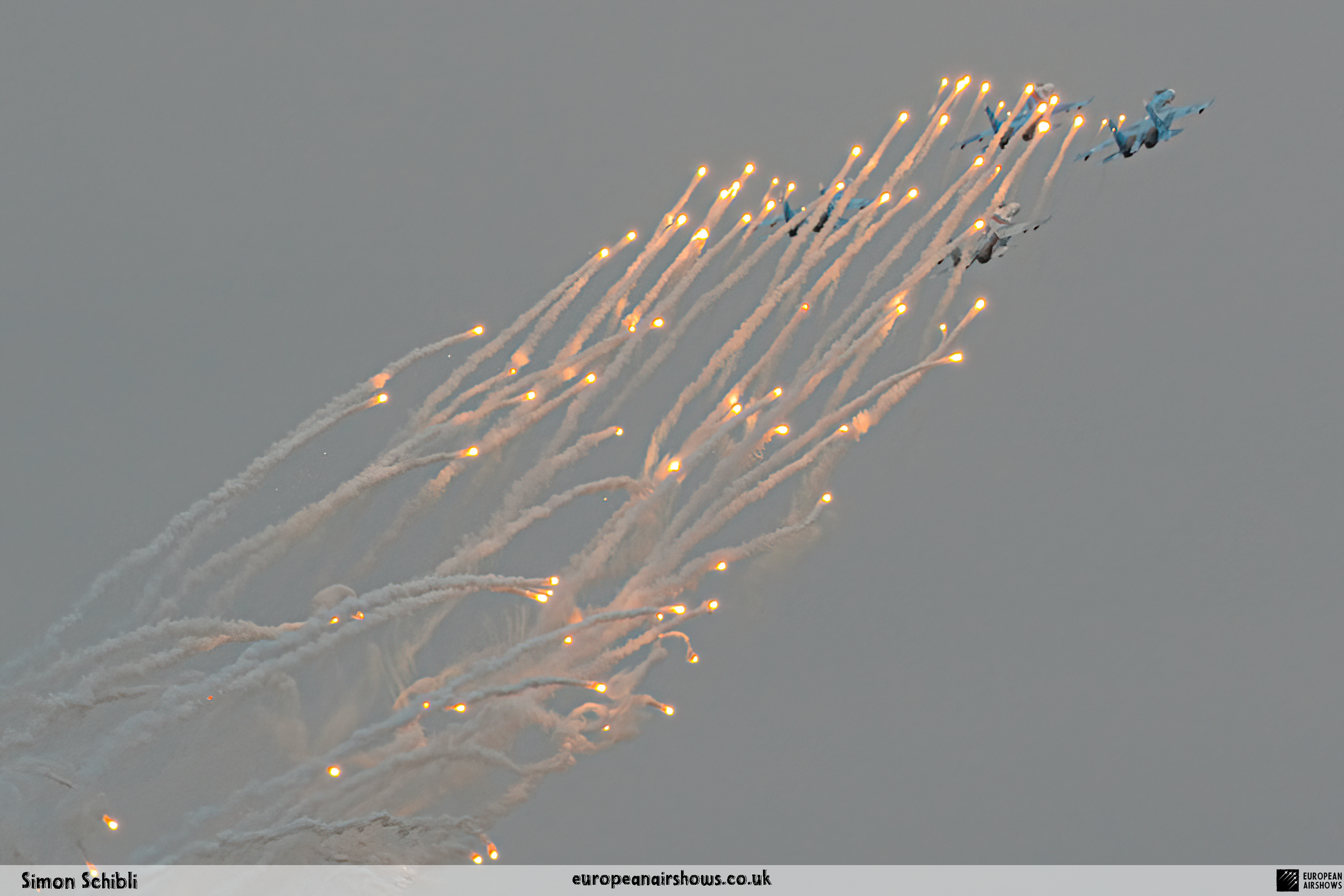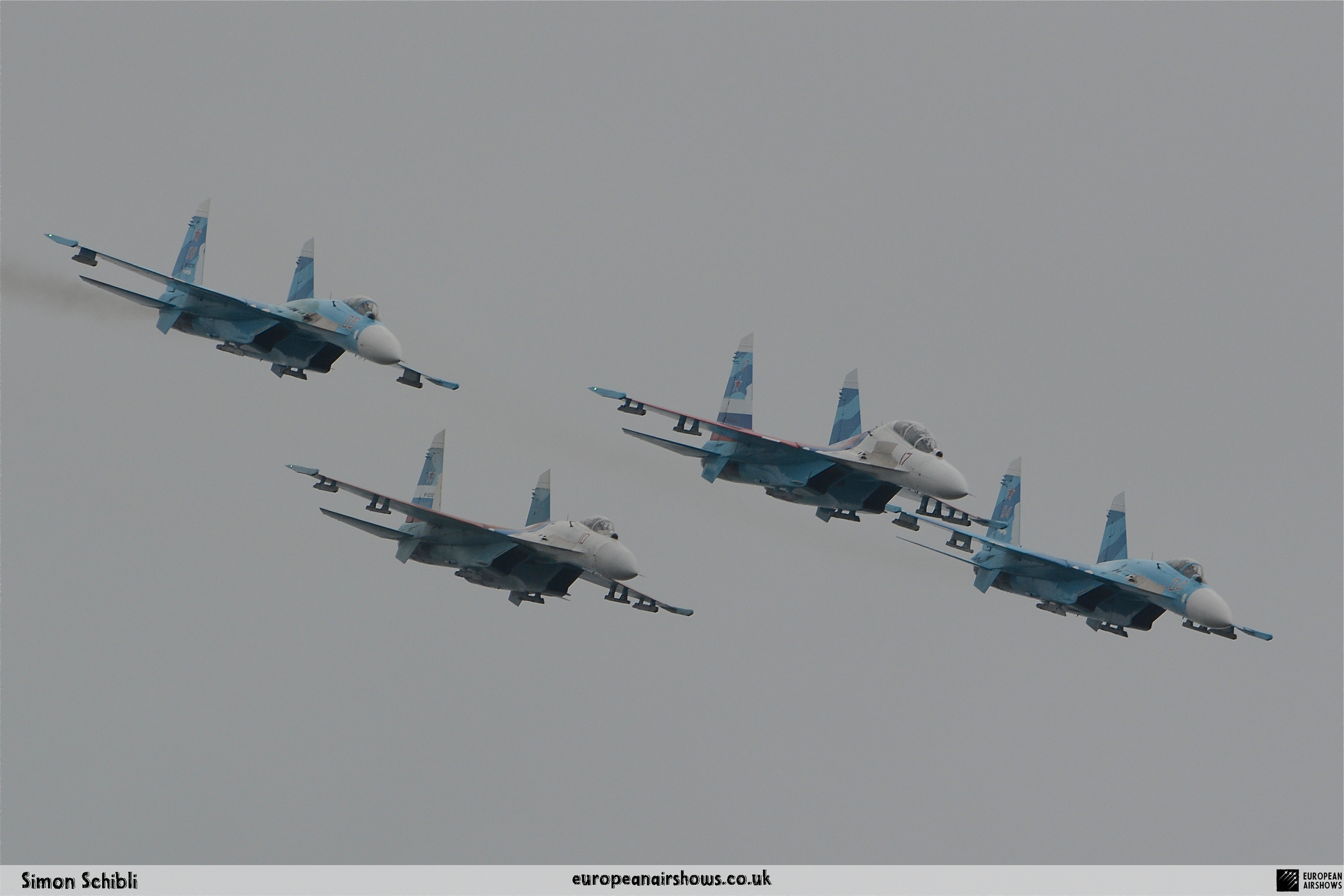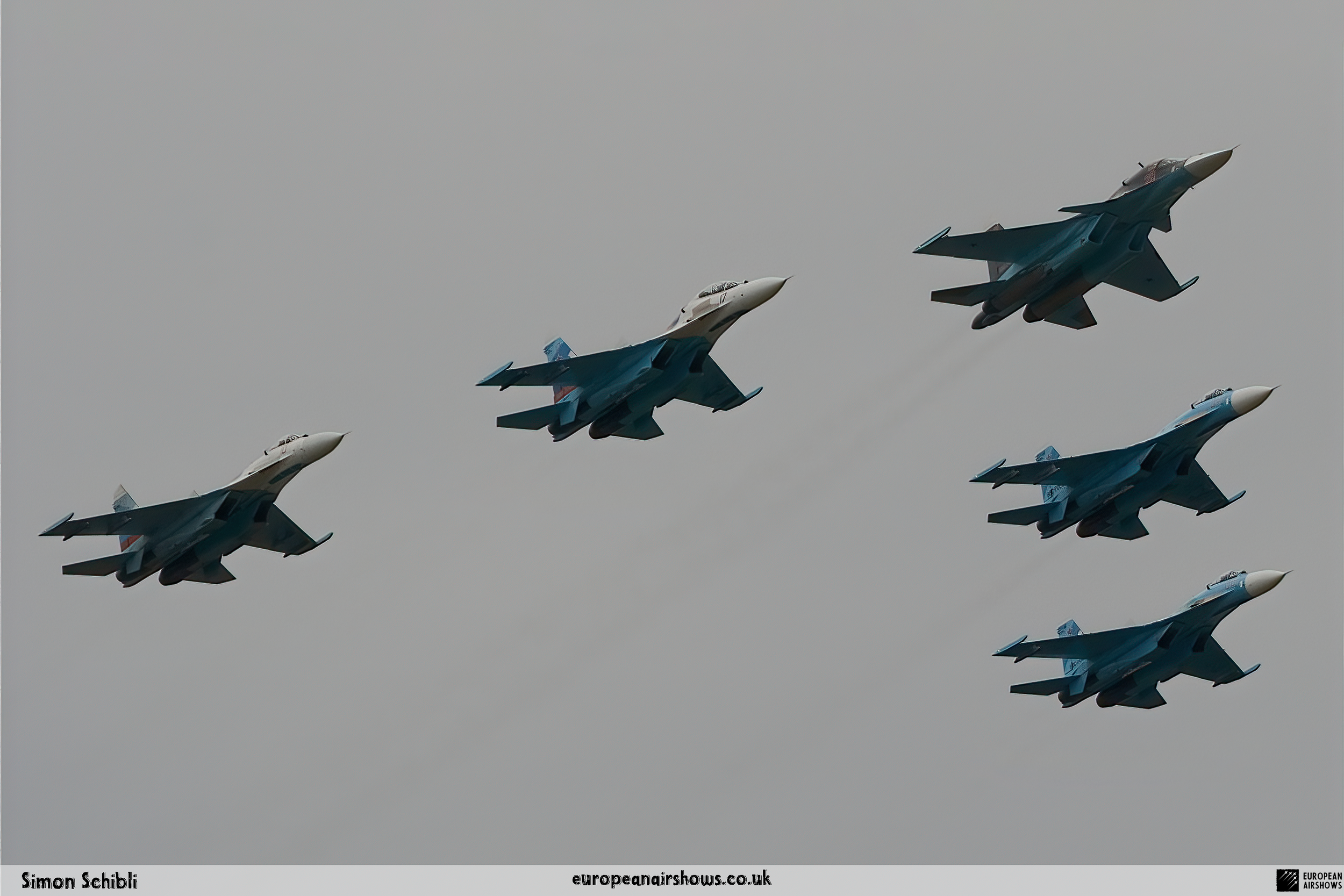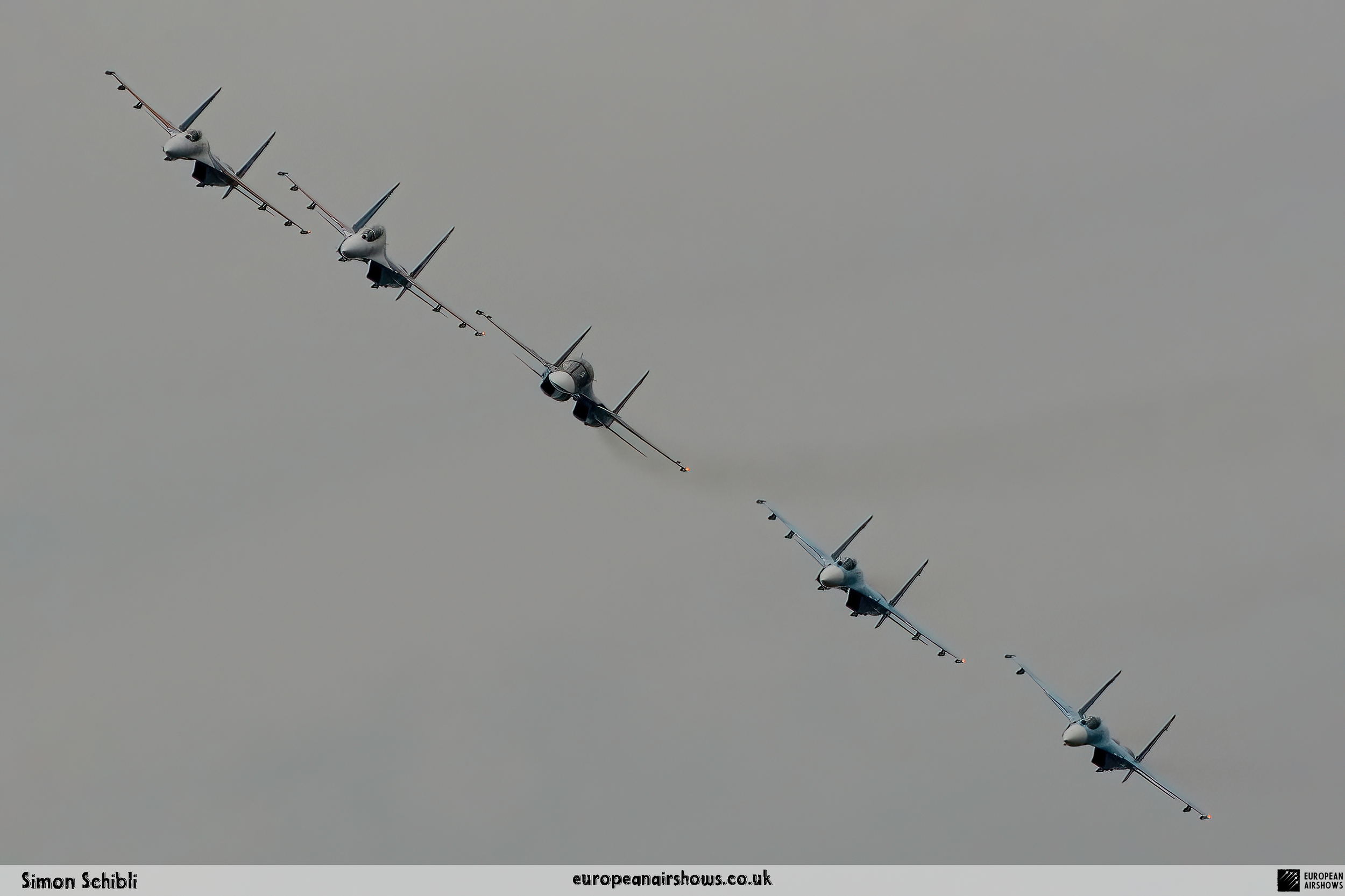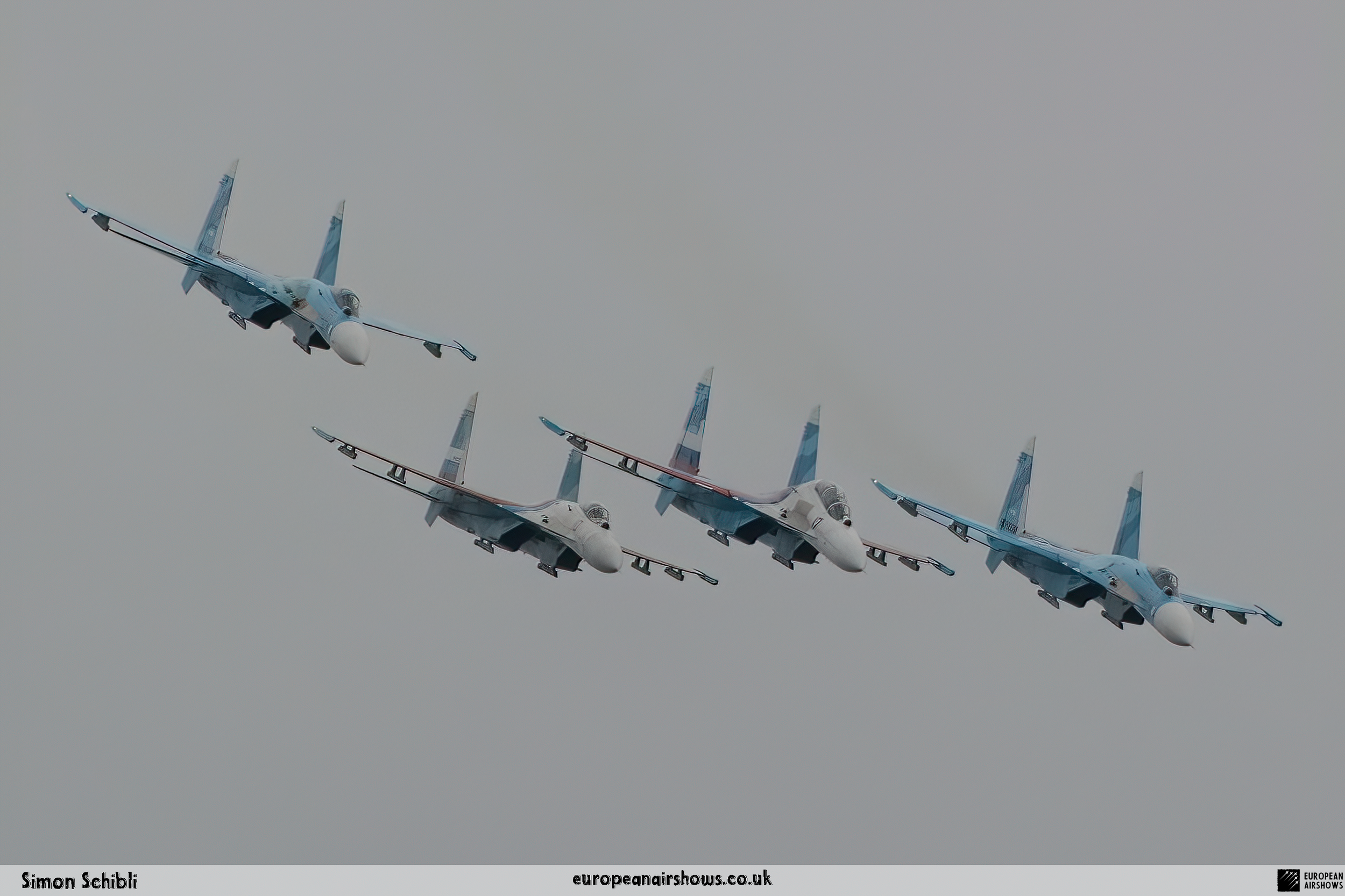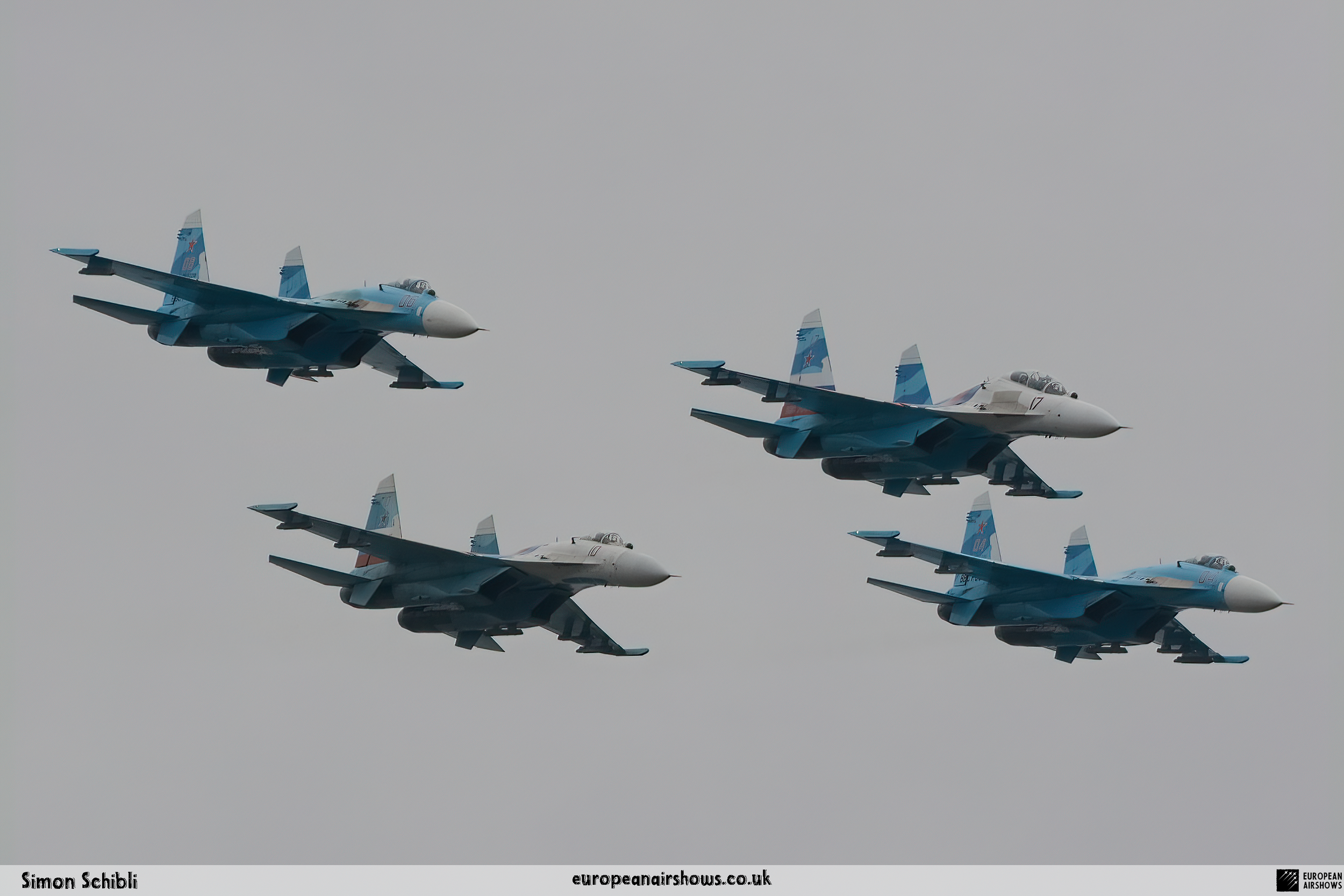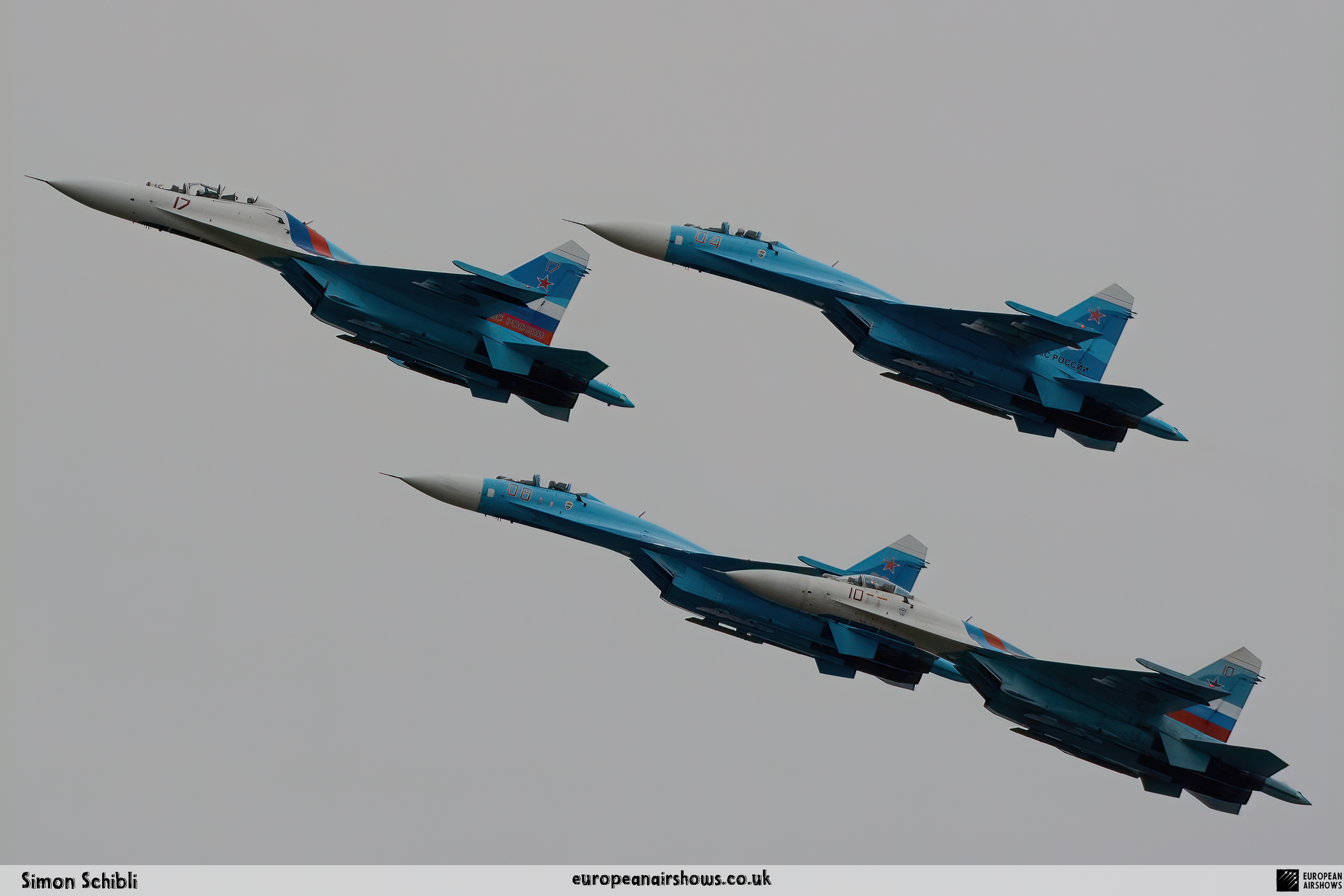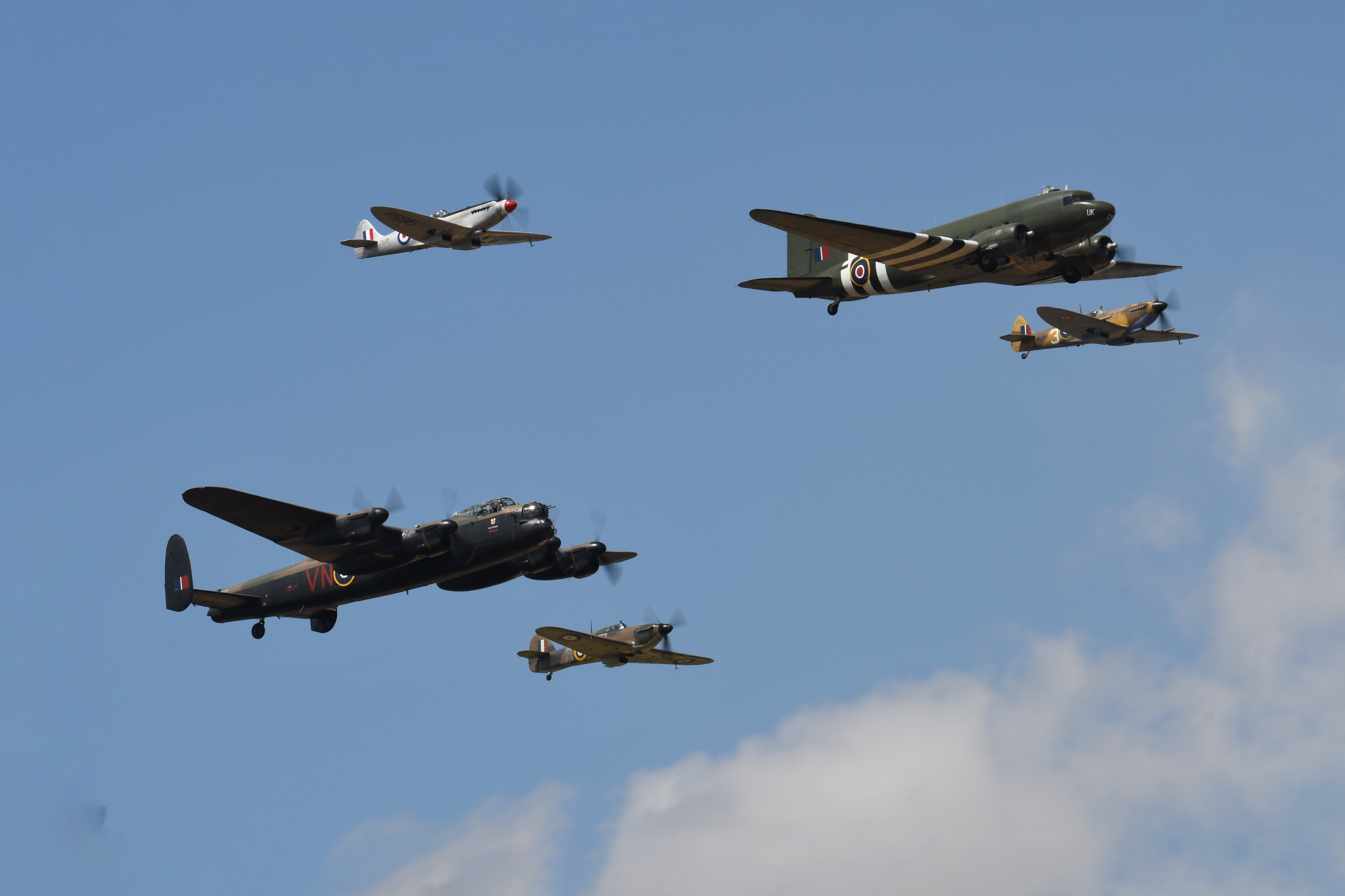Falcons of Russia
Country
Russia
Size
4 Aircraft
Base
Lipetsk Air Base
The Falcons of Russia is an aerobatic demonstration team of the Russian Air Force. It was created in 2006 at the Lipetsk Aviation Center in order to demonstrate the combat capabilities of military aircraft produced in Russia. Until 2015, the team was lead by Honored Military Pilot of Russia, Major General A. N. Kharchevsky. According to some experts, it is the only aerobatic team that demonstrates elements of air combat at low altitudes on combat aircraft. In addition to air combat, "Falcons of Russia" demonstrate complex solo aerobatics which manoeuvres including "Nesterov's loop", "shell", "bend", "dissolution" and a number of others. Flights are carried out at minimum intervals and distances. Over the years the team performed on aircraft based in the Lipetsk Aviation Center: Su-27, Su-30, Su-34, Su-35S, MiG-29, Su-25. As of 2021, the group is armed with Su-30SM and Su-35S aircraft.
Lipetsk aces demonstrated their skills in the skies of France, Norway, Kazakhstan, Kyrgyzstan, the Republic of Belarus, the international exhibition of weapons and military equipment "Nizhny Tagil" in 2006, 2008, 2009 and 2011.
In 2007, 2009, 2011, 2013, the team performed on the Su-27, Su-30 and Su-34 aircraft at the MAKS International Aviation and Space Salon in Zhukovsky. In 2019, the Falcons of Russia aerobatic team performed at the MAKS air show on Su-35S aircraft, which the group plans to use in the future.
In 2015, "Falcons of Russia" showed their performance in the composition of four aircraft at the 10th MILITARY PATRIOTIC HOLIDAY "OPEN SKY" held in the city of Ivanovo at the "SEVERNY" airfield. This was already the second performance of the aerobatic team in the city of Ivanovo, in 2014 the Falcons of Russia also took part in the OPEN SKY MILITARY HOLIDAY as part of a group of six aircraft, single aerobatics with the performance of aerobatics was demonstrated by Major General of Aviation Alexander Kharchevsky.
In the same 2015, the team performed at the Aviamix show and the Aviadarts competition of the International Army Games 2015, held at the Dubrovichi training ground (Ryazan Region), built specifically for these games. On May 20, 2016, the Falcons of Russia, consisting of four aircraft, performed on the central embankment of the city of Kamyshin, Volgograd Region, in honour of the 100th anniversary of the hero pilot Alexei Maresyev, as part of the campaign "Military service under contract - Your choice!" On August 20, 2016, the Falcons of Russia performed a complex formation aerobatics program at low and ultra-low altitude at an air show in Khabarovsk in honour of the 75th anniversary of the formation of the 11th Air Force and Air Defense Army. In 2017 and 2019, the Falcons of Russia aerobatic team took part in the MAKS air show, and since 2015, the Falcons of Russia have performed at the Army military-technical forum. In 2017, the Falcons of Russia showed for the first time at MAKS a demonstration of air combat at low altitudes.
| Back to Top |
Sukhoi Su-30SM Flanker H
The Sukhoi Su-30(NATO reporting name: Flanker-C/G/H) is a twin-engine, two-seat supermaneuverable fighter aircraft developed in the Soviet Union by Russia's Sukhoi Aviation Corporation. It is a multirole fighter for all-weather, air-to-air and air-to-surface deep interdiction missions.
The Su-30 started out as an internal development project in the Sukhoi Su-27 family by Sukhoi. The design plan was revamped and the name was made official by the Russian Defense Ministry in 1996. Of the Flanker family, the Su-27, Su-30, Su-33, Su-34 and Su-35 have been ordered into limited or serial production by the Russian Defense Ministry. The Su-30 has two distinct version branches, manufactured by competing organisations: KnAAPO and the Irkut Corporation, both of which come under the Sukhoi group's umbrella.
KnAAPO manufactures the Su-30MKK and the Su-30MK2, which were designed for and sold to China, and later Indonesia, Uganda, Venezuela, and Vietnam. Due to KnAAPO's involvement from the early stages of developing the Su-35, these are basically a two-seat version of the mid-1990s Su-35. The Chinese chose an older but lighter radar so the canards could be omitted in return for increased payload. It is a fighter with both air supremacy and attack capabilities, generally similar to the U.S. F-15E Strike Eagle.
Irkut traditionally served the Soviet Air Defense and, in the early years of Flanker development, was given the responsibility of manufacturing the Su-27UB, the two-seat trainer version. When India showed interest in the Su-30, Irkut offered the multirole Su-30MKI, which originated as the Su-27UB modified with avionics appropriate for fighters. Along with its ground-attack capabilities, the series adds features for the air-superiority role, such as canards, thrust-vectoring, and long-range phased-array radar. Its derivatives include the Su-30MKM, MKA, and SM for Malaysia, Algeria, and Russia respectively. The Russian Air Force operates several Su-30s and has ordered the Su-30SM variant as well.
The Su-30 is a multi-role fighter and has a two-seat cockpit with an airbrake behind the canopy. The integrated aerodynamic configuration, combined with the thrust vectoring control ability, results in high manoeuvrability and unique takeoff and landing characteristics. Equipped with a digital fly-by-wire system, the Su-30 is able to perform some very advanced manoeuvres, including the Pugachev's Cobra and the tailslide. These manoeuvers quickly decelerate the aircraft, causing a pursuing fighter to overshoot, as well as breaking a Doppler radar-lock, as the relative speed of the aircraft drops below the threshold where the signal registers to the radar. The aircraft's powerplant incorporates two Saturn AL-31F after burning low-bypass turbofan engines, fed through intake ramps. Two AL-31Fs, each rated at 123 kN (28,000 lbf) of full afterburning thrust ensures Mach 2 in level flight, 1,350 km/h speed at low altitude, and a 230 m/s climbing rate.
With a normal fuel reserve of 5,270 kg, the Su-30MK is capable of performing a 4.5-hour combat mission with a range of 3,000 km. An aerial refuelling system increases the range to 5,200 km (3,200 mi) or flight duration up to 10 hours at cruise altitudes. The aircraft features autopilot ability at all flight stages including low-altitude flight in terrain-following radar mode, and individual and group combat employment against air and ground/sea-surface targets. An automatic control system interconnected with the navigation system ensures route flight, target approach, recovery to airfield and landing approach in automatic mode.
| Back to Top |
Sukhoi Su-35S Flanker E
The Sukhoi Su-35 (NATO reporting name: Flanker-E) is the designation for two improved derivatives of the Su-27 air-defence fighter. They are single-seat, twin-engine, supermaneuverable aircraft, designed by the Sukhoi Design Bureau and built by the Komsomolsk-on-Amur Aircraft Plant.
The type was originally developed by the Soviet Union from the Su-27 and was known as the Su-27M. It incorporated canards and a multi-function radar giving it multi-role capabilities. The first prototype made its maiden flight in June 1988. Following the dissolution of the Soviet Union Sukhoi re-designated it as the Su-35 to attract export orders. Fourteen aircraft were produced and used for tests and demonstrations; one example had thrust-vectoring engines and was, in turn, redesignated the Su-37. A sole Su-35UB two-seat trainer was also built in the late 1990s that resembled the Su-30MK family.
In 2003, Sukhoi embarked on a second modernization of the Su-27 to serve as an interim aircraft awaiting the development of the Sukhoi PAK FA (Su-57) program. Also known as the Su-35, this version has a redesigned cockpit and weapons-control system and features thrust-vectoring engines in place of the canards. The type made its first flight in February 2008. Although it was designed for export, the Russian Air Force became the launch customer in 2009, with the production version designated Su-35S. China's People's Liberation Army Air Force and the Indonesian Air Force have also placed orders.
| Back to Top |
